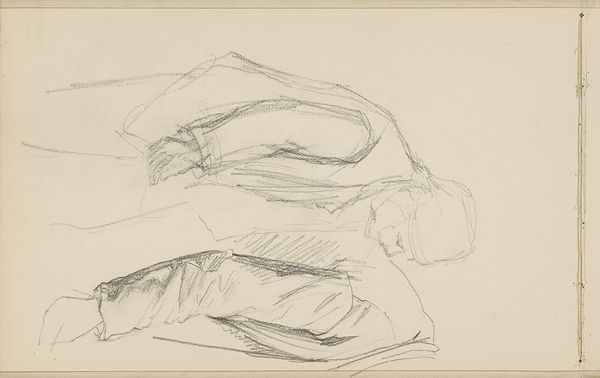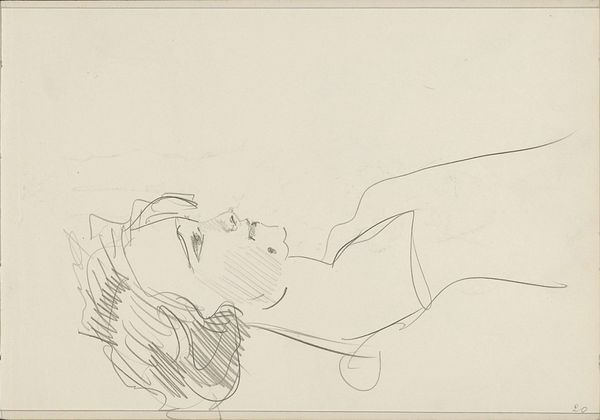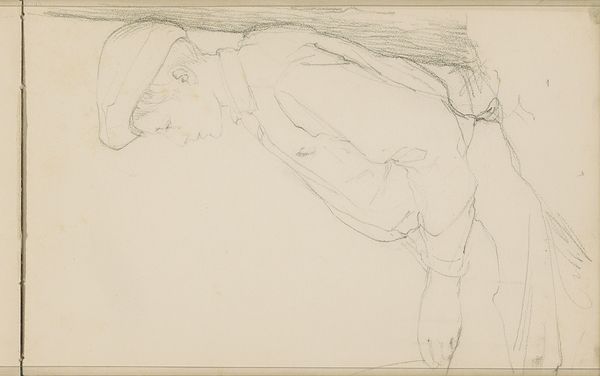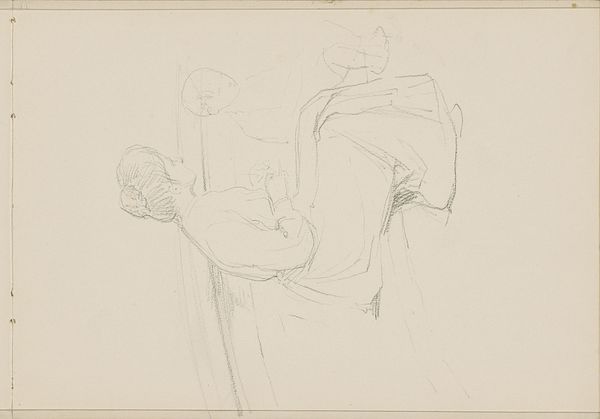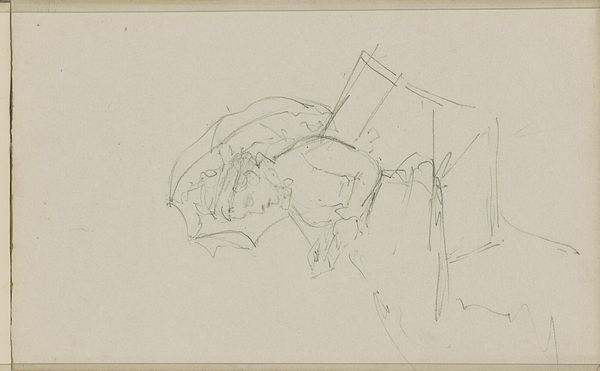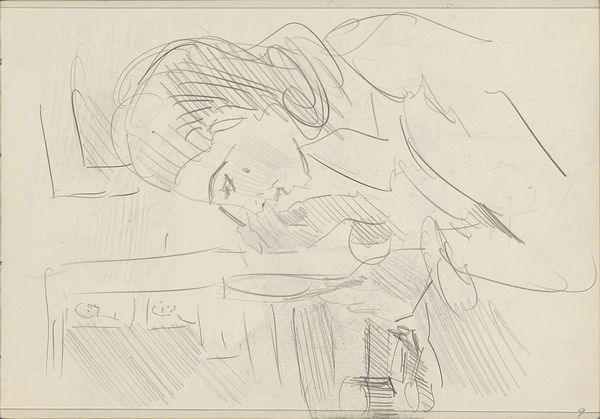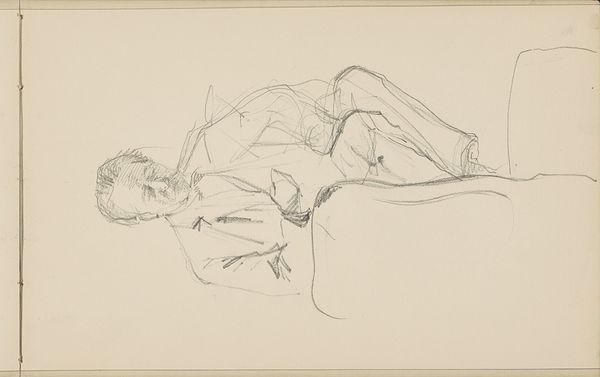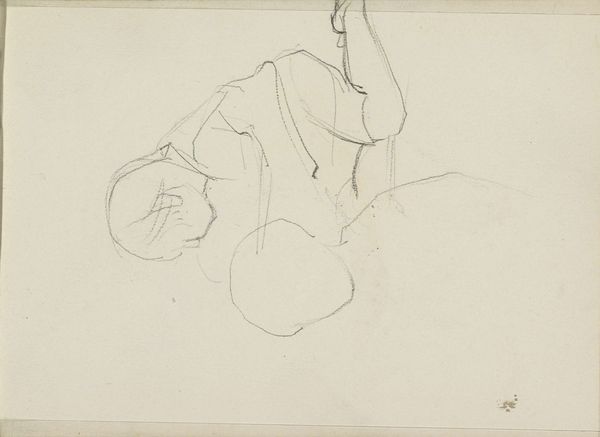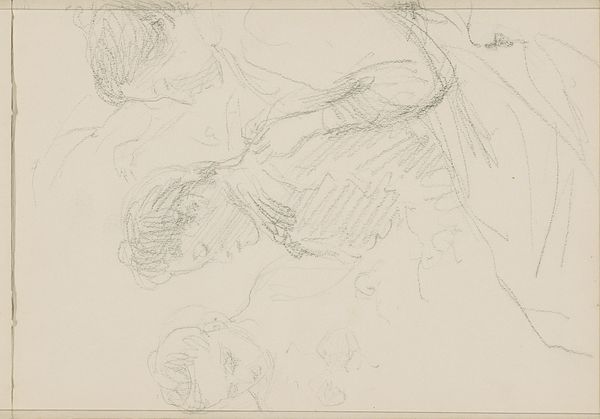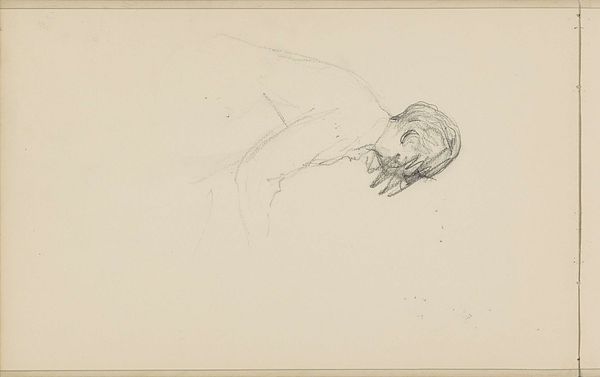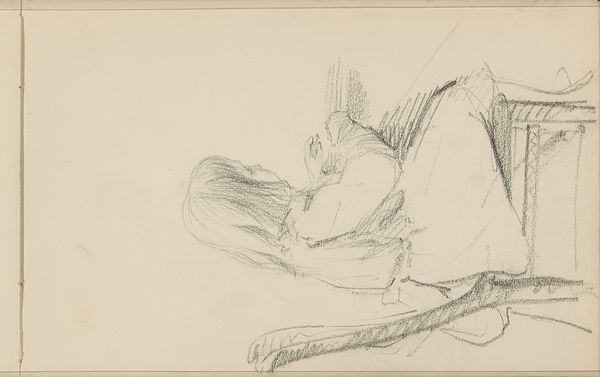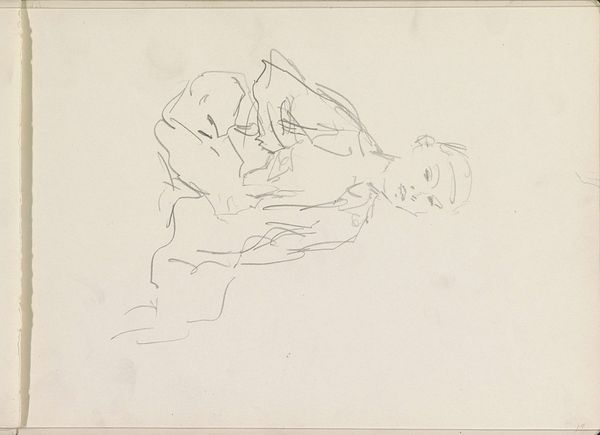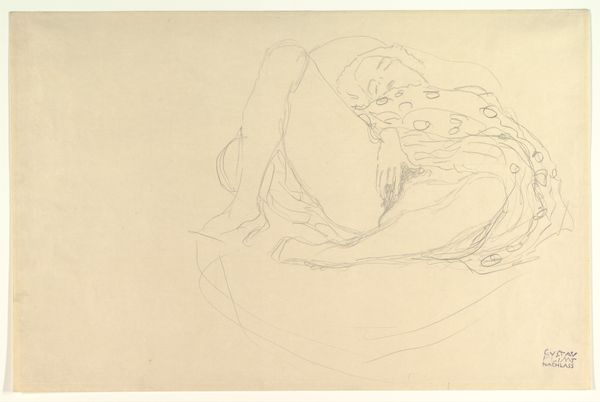
drawing, pencil
#
portrait
#
drawing
#
pencil sketch
#
etching
#
figuration
#
pencil
#
portrait drawing
#
realism
Copyright: Rijks Museum: Open Domain
Curator: We’re looking at a pencil drawing here at the Rijksmuseum titled "Man zittend aan een tafel," or "Man Sitting at a Table" which was produced sometime between 1865 and 1913. Editor: The immediacy is striking; there’s a sense of captured, transient motion. It’s almost ethereal because the lines are so lightly laid down. There’s a tentative air to it all. Curator: It’s interesting that you pick up on that airiness, as sketches, traditionally, were exploratory steps toward a more ‘resolved’ image. Editor: But in its unfinished state, it invites more conjecture. Is it me, or does this man seem burdened? The line of his back creates this great arc of weariness or… absorption? Curator: The gesture of the subject absolutely directs our reading. It speaks to the weight of contemplation or even grief. Consider how the image aligns with a broader cultural shift towards introspection that marks much art after the mid-19th century. Think about existentialism, the questioning of previously fixed moral systems. This image really becomes part of a thread through all that. Editor: I find the reduction of form, nearly to the point of abstraction, interesting, like some of Rodin’s preliminary works. How much detail do we *need* to suggest character? Curator: Right. This simplification and paring down emphasizes universal experiences; there’s little to place the figure socially, so in many ways, it serves as an open vessel to be inhabited by different meanings by different viewers, which only grows over time. Editor: In that case, this drawing continues to participate in a cultural conversation about the internal life, one that stretches all the way back to Bramine Hubrecht. Curator: An active participant, indeed, within both its own period and the present.
Comments
No comments
Be the first to comment and join the conversation on the ultimate creative platform.
